Table of contents
Shirataki noodles ( organic?), also called konjac noodles, are high-fiber, extremely low-calorie noodles that are usually bought pre-cooked (not raw) and soaked in water.
Use in the kitchen
The noodles are made from the flour of the konjac root. They are often found under the Japanese name shirataki, which means "white waterfall". Konjac noodles should not be confused with rice noodles (made from rice flour) or "real glass noodles" (made from starch from peas, corn or mung beans). Their taste is neutral, which is why they go well with savory and sweet dishes. They have a chewy, slightly rubbery texture. Instead of noodles (pasta), you can also buy blocks (konnyaku, yam cake). Konnyaku is also used as a vegan "seafood substitute" because konjac has a slight "fishy smell".
Shirataki noodles are a gluten-free alternative to pasta made from durum wheat semolina. The noodles are now also available in various "pasta shapes" such as spaghetti and lasagne sheets. Also available are Shirataki rice grains, which are a low-calorie substitute for long-grain rice.
The noodles taste particularly good in Asian dishes and soups. Delicious and low-calorie recipes include Shirataki with Pak Choy or Shirataki with fennel and peppers. As a substitute for rice noodles, they also taste great in a Pho with vegetables or a Laksa curry soup. Cold Shirataki noodles are also suitable for salads, together with spring onions, carrots, red cabbage and iceberg lettuce. An oil-free salad dressing with avocado and onions goes well with this. Briefly boiling "Shirataki rice" with almond or oat milk makes a delicious "rice pudding substitute".
How do you prepare Shirataki noodles? Shirataki pasta is usually bought in moist packaging. When you open the packaging, there may be a slight fishy smell. This is the smell of the konjac root and disappears after washing and preparing the noodles.
Before use, you have to drain the liquid and rinse the pasta thoroughly under cold running water and then drain well. The best way to do this is to put the pasta in a sieve. Optionally, you can put the pasta in a bowl and mix in about 1 teaspoon of lemon juice (or apple cider vinegar, rice vinegar). Then rinse the pasta again with water and drain well. This should reduce the strong smell.
The noodles are pre-cooked (not raw) and therefore mostly ready to eat after rinsing (please follow the instructions for use). You can heat them for 1-3 minutes in boiling water or together with the vegetables or sauce. As a side dish for soup, you can add the noodles directly to the hot broth after draining. For a firmer consistency, fry the noodles on a medium heat in a non-stick frying pan until they squeak slightly when stirred. This causes a lot of water to evaporate and the noodles are less "rubbery".
noodles
Konjac can easily be made from konjac flour. To stabilize the noodles, you need lime water, for which you use food-grade calcium hydroxide.
For 250 g of pasta, you need 240 ml of water, 0.3 g of food-grade calcium hydroxide (approx. 1/4 level teaspoon) and 12 g of konjac flour. Boil 2-3 liters of water in a pot. Pour 240 ml of water into a bowl and dissolve 0.3 g of calcium hydroxide in it. Add the konjac flour, preferably strain it through a tea strainer and immediately stir vigorously with a whisk. Stir until a firm gel has formed. Press the mixture through a potato ricer or pasta press into the cooking water and cook for 15 minutes. Stir frequently so that the pasta does not stick together. Pour the water through a sieve, drain the pasta and serve. Alternatively, you can put the pasta in water and store it in the fridge for 2-3 days. 2
Vegan recipe for Shirataki vegetable stir-fry
Ingredients (for 4 people): 300 g broccoli, 150 g turnips, 3 spring onions, half a bunch of coriander leaves, 1 clove of garlic, 2 tsp soy sauce, 2 tsp rice vinegar, 2 tsp grated ginger, juice of one lime, salt,pepper, 300 g Shirataki noodles (pre-cooked).
Preparation: Wash the broccoli, divide into florets and blanch in salted water for approx. 3 minutes, then rinse and drain. Wash the turnips and drain well. Wash the spring onions and cut diagonally into rings. Wash the coriander leaves, shake dry and chop roughly. Peel the garlic and press it through a press. Mix the garlic with the soy sauce, rice vinegar and ginger in a bowl. Season with lime juice and salt and pepper. Rinse the shirataki noodles well in cold water and drain. Fry the noodles, broccoli, turnips and spring onions with the sauce in a wok or pan for approx. 5 minutes. Finally, mix in the coriander leaves and serve immediately.
Vegan recipes with Shirataki noodles can be found under the note: " Recipes that have the most of this ingredient ".
| Not only vegans or vegetarians should read this: Vegans often eat unhealthily. Avoidable nutritional errors. |
Purchasing - Storage
Shirataki noodles can be found in the range of large retailers such as Coop, Migros, Spar, Rewe, Edeka, Aldi, Hofer, Billa. The vegan low-carb noodles, like other konjac products, can often be found in Asian shops. You can also order them directly from the manufacturer via specialised online shops, sometimes in organic quality. Denner, Volg and Lidl, as well as the organic supermarkets Denn's Biomarkt and Alnatura do not sell the noodles in their standard range.
Shirataki noodles are available pre-cooked, "floating in water", sealed and packaged in plastic foil or a plastic container so that it is airtight. In some Asian shops or online shops you can also find dried konjac noodles, but pay close attention to the ingredients, as these often contain wheat flour. The calorie content is then more than 350 kcal/100g, similar to grain pasta. There are also dried konjac noodles without wheat flour, the ingredients list e.g. tapioca starch (and tapioca syrup). The calorie content of the dried product is then around 27 kcal/100g.
The availability of Shirataki noodles (konjac noodles) varies depending on the size of the store, catchment area, etc. If you are interested, click on our recorded food prices for the DA-CH countries (above under the ingredient image). There you will find current prices from various supermarkets and their price development.
Storage tips
Shirataki noodles have a shelf life of at least 1 year in an intact, sealed package. Storage in a cool, dark place is beneficial and can extend the shelf life. Opened Shirataki noodles can be stored in an airtight container in the refrigerator for 2 days. Freezing is not recommended for Shirataki noodles.
Ingredients - Nutritional values - Calories
100 g of Shirataki noodles (soaked in water) contain around 10 kcal and are fat and protein free. They contain hardly any usable carbohydrates (4.1 g/100g) and are rich in fiber. 100 g of noodles contain 16.4% of the daily requirement of dietary fiber. We show the nutritional values of a commercial product because the nutritional databases available to us do not list Shirataki noodles.
In comparison, dried macaroni made from whole grains has significantly more calories at 348 kcal/100g, while cooked whole grain pasta has around 140 kcal/100g. Dried rice noodles made from rice flour have 364 kcal/100g, while cooked rice noodles have around 108 kcal/100g. 1
The carbohydrates contained consist mainly of the dietary fiber glucomannan (a water-soluble polysaccharide). 4 This has the highest known water-binding capacity of all natural products. Psyllium husks also have a high water-binding capacity and, as a result, swelling capacity. Both are very filling with a low calorie content and are therefore ideal as part of a balanced, low-calorie diet.
When buying, pay attention to possible additives. Shirataki noodles often contain additives to extend their shelf life, such as acidity regulators (eg citric acid E 330) and firming agents (eg calcium hydroxide E 525).
The complete ingredients of Shirataki noodles, the coverage of the daily requirement and comparison values with other ingredients can be found in our nutrient tables below the ingredient image.
Effects on health
Shirataki noodles contain hardly any usable carbohydrates and are low in calories and gluten-free. They are therefore an ideal part of a balanced, low-calorie diet and can help you lose weight. You should eat the noodles with gently cooked vegetables or raw salad and avoid fatty, high-calorie sauces (e.g. peanut sauce). The noodles consist largely of the water-soluble fiber glucomannan. This binds large amounts of water, which is why the noodles swell in the stomach and fill you up quickly and for a long time.
You can find more information on the topic of weight loss in our article Lose weight healthily and permanently.
Several studies show the positive effect of glucomannan on blood sugar, insulin, ghrelin and leptin levels in type 2 diabetes patients. 5,6 There are also studies in which no improvement in insulin or glucose concentrations after eating was found. 7 However, a positive effect on fasting plasma glucose levels was found in all studies. 5,6,7 While the effect of pure glucomannan is often investigated, studies on the effect of konjac products are rare. In a recent study from Japan, patients with type 2 diabetes consumed a konjac product (konjac noodles, konjac rice, desserts) every day for 12 weeks. This reduced both the HbA1c value and the fasting plasma glucose level. The levels of the hunger and satiety hormones ghrelin and leptin also changed. 8 Based on the research results, it is assumed that glucomannan and konjac products could be a useful addition to nutritional therapy for type 2 diabetes patients in the future. Meta-studies show that konjac or glucomannan can lower cholesterol levels as well as glucose levels. 9,10
The studies mentioned were carried out with small numbers of participants and the results are not clear. Studies with larger samples and investigations into long-term effects are required. Only then can we better understand the effects of glucomannan and konjac products and establish treatment options that are suitable for people with type 2 diabetes or high cholesterol levels.
Dangers - Intolerances - Side effects
There is evidence that taking capsules containing glucomannan can reduce the absorption of medication and weaken its effectiveness. 11 It is not known to what extent this applies to konjac noodles. To be on the safe side, you should leave a gap of 60 minutes between taking medication and eating konjac noodles.
Due to the good swelling properties and low calorie content of glucomannan (konjac flour), special "diet capsules" are also made from it, which are supposed to help with weight loss. There have been repeated cases where the pills have swollen in the throat or stomach and caused constipation. 11,12 Shirataki noodles also swell in the stomach and intestines, but not as much as the glucomannan capsules. Cases of blockages in the stomach outlet due to swollen konjac noodles are unusual. There is a known case from Australia where a woman had to have such a blockage in the stomach outlet (bezoar) surgically removed. 3 One should therefore not exceed the recommended portion size.
Folk medicine - natural healing
The gel that is made from the tuber has been used in folk medicine in China for more than 2000 years. It is used to treat asthma, burns, chest pain and skin problems. Konjac gel is also used in TCM ( Traditional Chinese Medicine) for detoxification, tumor suppression and to reduce blood congestion in the veins. 13
The tuber is said to help with snake and rodent bites when crushed. 13
Ecological footprint - animal welfare
The ecological CO2 footprint of Shirataki noodles depends on several factors, including the way the devil's tongue is grown, the further processing, but also the packaging and transport. Despite extensive research, we were unable to find any precise information on the ecological CO2 footprint of Shirataki noodles. The devil's tongue is originally a plant from the tropical rainforest. The main cultivation areas are in China (Yunnan) and Japan (Gunma) and therefore fortunately not in the rainforest area. However, cultivation in Indonesia and other Southeast Asian countries with rainforest areas is increasing due to the increased demand for konjac products. If the konjac root is also cultivated in China or Japan for the European market, the transport route of the tuber or the processed noodles is very long. This entails correspondingly high emissions. In addition, the pasta is often sold pre-cooked and packaged in a moist state, which further increases the weight during transport and the associated emissions. So it's best to buy dried pasta and prepare it yourself.
Worldwide occurrence - cultivation
The devil's tongue ( Amorphophallus konjak) is a perennial herbaceous plant that originally comes from Southeast Asia, where it is found mainly in tropical rainforests. In China, the tuber has been used as a food and medicine since at least 200 BC. Devil's tongue has also been growing in Japan since the 6th century. 4
Nowadays, devil's root is mainly grown in southern China and Japan. Outside of Asia, attempts are now being made to cultivate devil's tongue in Western Europe and New Zealand. 4
Industrial production
Water, konjac flour and calcium hydroxide are used to make shirataki noodles. Traditionally, there are two varieties: the pressed "spaghetti-like" shirataki and the sliced "ribbon-like" konnyaku noodles.
Traditionally, konjac flour consists of air-dried, then mashed and ground tubers of the devil's tongue. Today, konjac flour is produced industrially. The tubers are washed before processing. They are then cut into chips and dried using a hot-air dryer, which is then gassed with sulphur dioxide to prevent the chips from darkening. The dried chips are then ground into konjac flour. The flour goes through several extraction and cleaning processes before it is packaged or further processed. 4
Further information
The devil's tongue ( Amorphophallus konjac, syn.: Amorphophallus rivieri) belongs to the genus of the titan root ( Amorphophallus) within the family of the arum plants (Araceae). Typical for this genus is the smell of carrion when it flowers, in order to attract insects and ensure pollination. Closely related and even significantly larger is the titan arum ( Amorphophallus titanum) - the inflorescence with spadix measures approx. 2 m; in the case of the devil's tongue, approx. 30-40 cm. 13
Alternative names
Shirataki noodles are also called konjac, konnyaku noodles or konnyaku glass noodles. In English they are called shirataki noodles, konjac noodles, konjac flour noodles or miracle noodles.
Other uses
The root of the devil's tongue is also used to make cosmetic sponges (konjac or konjac sponge). It is hard when dry and when exposed to water it takes on a soft, sponge-like texture. It is used for cleaning and exfoliating the skin.
Bibliography - 13 Sources (Link to the evidence)
| 1. | USDA. United States Department of Agriculture. |
| 2. | Salala.de Konjaknudeln aus Konjakmehl einfach selber machen. 2022. |
| 3. | Jackman C, Waddell R, Fisher L, Ben-Meir M, Blecher G, Goh GS, Walker K. Konjac flour noodles associated with gastric outlet obstruction. Emerg Med Australas. 2018 Apr;30(2): 283-284. |
| 4. | Chua M, Baldwin TC, Hocking TJ, Chan K. Traditional uses and potential health benefits of Amorphophallus konjac K. Koch ex N.E.Br. J Ethnopharmacol. 2010 Mar 24;128(2): 268-78. |
| 5. | Chearskul S, Kriengsinyos W, Kooptiwut S, Sangurai S, Onreabroi S, Churintaraphan M, Semprasert N, Nitiyanant W. Immediate and long-term effects of glucomannan on total ghrelin and leptin in type 2 diabetes mellitus. Diabetes Res Clin Pract. 2009 Feb;83(2): e40-2. |
| 6. | Chearskul S, Sangurai S, Nitiyanant W, Kriengsinyos W, Kooptiwut S, Harindhanavudhi T. Glycemic and lipid responses to glucomannan in Thais with type 2 diabetes mellitus. J Med Assoc Thai. 2007 Oct;90(10): 2150-7. |
| 7. | Vuksan V, Sievenpiper JL, Owen R, Swilley JA, Spadafora P, Jenkins DJ, Vidgen E, Brighenti F, Josse RG, Leiter LA, Xu Z, Novokmet R. Beneficial effects of viscous dietary fiber from Konjac-mannan in subjects with the "insulinresistance" syndrome: results of a controlled metabolic trial. Diabetes Care. 2000 Jan;23(1): 9-14. |
| 8. | Ueno H, Haraguchi N, Azuma M, Shiiya T, Noda T, Ebihara E, Uehira Y, Uchida T, Sasaba K, Nakamura M, Uchimura N, Kita E, Umemura A, Nobe T, Sumoto E, Yano Y, Nakazato M. Active Consumption of Konjac and Konjac Products Improves Blood Glucose Control in Patients with Type 2 Diabetes Mellitus. J Am Nutr Assoc. 2023 Feb;42(2):123-129. |
| 9. | Zhang Z, Zhang Y, Tao X, Wang Y, Rao B, Shi H. Effects of Glucomannan Supplementation on Type II Diabetes Mellitus in Humans: A Meta-Analysis. Nutrients. 2023 Jan 24;15(3): 601. |
| 10. | Ho HVT, Jovanovski E, Zurbau A, Blanco Mejia S, Sievenpiper JL, Au-Yeung F, Jenkins AL, Duvnjak L, Leiter L, Vuksan V. A systematic review and meta-analysis of randomized controlled trials of the effect of konjac glucomannan, a viscous soluble fiber, on LDL cholesterol and the new lipid targets non-HDL cholesterol and apolipoprotein B. Am J Clin Nutr. 2017 May;105(5): 1239-1247. |
| 11. | Vanderbeek PB, Fasano C, O'Malley G, Hornstein J. Esophageal obstruction from a hygroscopic pharmacobezoar containing glucomannan. Clin Toxicol (Phila). 2007;45(1):80-2. |
| 12. | Henry DA, Mitchell AS, Aylward J, Fung MT, McEwen J, Rohan A. Glucomannan and risk of oesophageal obstruction. Br Med J (Clin Res Ed). 1986 Mar 1;292(6520): 591-2. |
| 13. | Baumann J. Teufelszunge (Amorphophallus konjac) - Eine Stinkpflanze, die man essen kann. Blog - Botanischer Garten der Universität Zürich. 2023. |

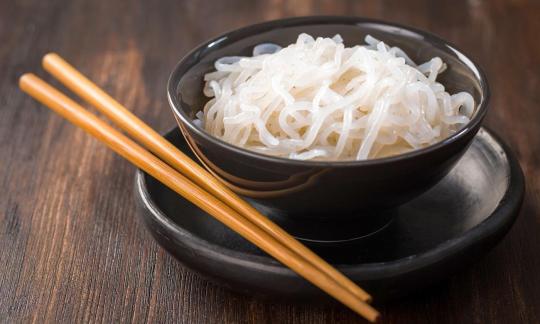

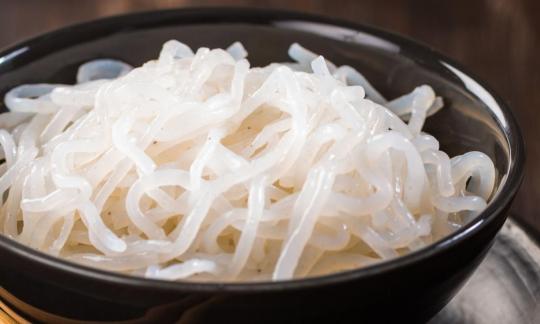

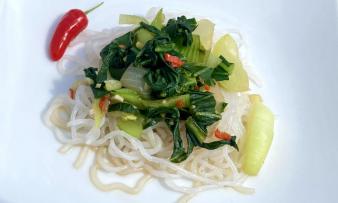
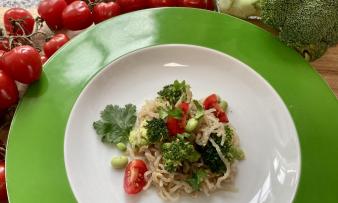
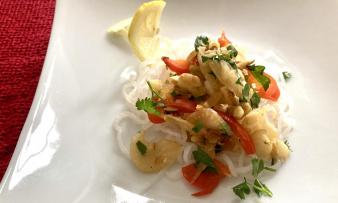


Comments